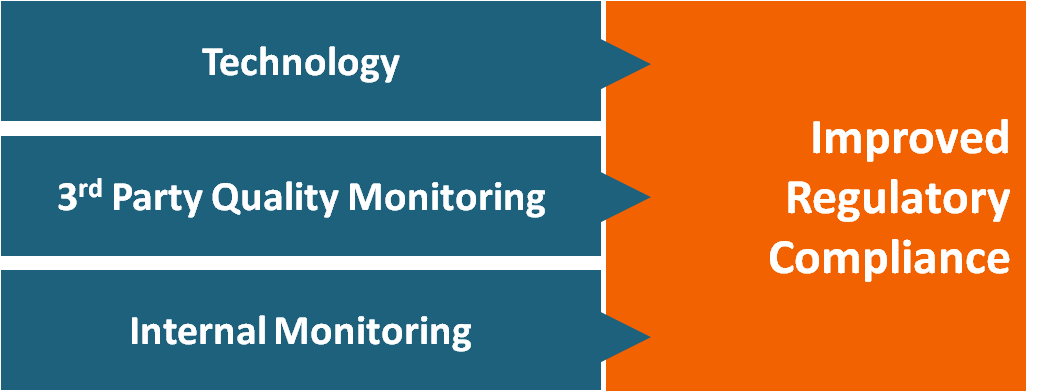Customer experience in an omni-channel environment allows consumers to reach out for help on any channel of their choice and for customer service agents to respond to those channels faster than ever before. While speed and convenience are of high importance to a consumer, keeping up with the regularly evolving customer channel preferences and customer experience methods can make regulatory compliance difficult to manage. However, with advancements in quality monitoring technology coupled with more robust quality monitoring programs, companies can ensure that agents are providing a convenient and accessible customer experience to consumers while following federal compliance regulations that keep up with the demand of the consumer.
The Role of Technology
Customer service agents address issues on four main channels: voice, chat, social, and email. It can be difficult to monitor across each of these channels in a cohesive manner, but it is increasingly possible using a tool for analyzing this unstructured data. Technologies – too often disparate – are used to gather communications that take place on these channels, scanning the pool of data, and analyzing information gathered using a tool specifically designed for studying unstructured data. An analyst can then use the tool to perform statistical analysis on the data to identify calls or other forms of communication between an agent and a customer that warrant a human evaluation. A quality monitoring professional reviews these queued communications and provides feedback to the analysis engine that is continually searching the stream of unstructured data.
The Role of Quality Monitoring Programs
A more straightforward approach is to directly sample the data sources using a human quality monitoring professional. This can be done through a number of programs, including mystery shopping, which allows a quality monitoring agent to evaluate the quality and compliance of information coming from a customer service agent in real time. Through this method, a QM agent can leverage scoring and reporting technologies to provide your executive with a dashboard to quickly review any potential issues.
The Role of Internal Monitoring
Lastly, a more hands-on option is to provide a tool that randomly listens, reads and examines communications and is operated internally. The company can score customer communications through this tool and use it to provide consolidated reporting, which includes executive input from the entire organization while summarizing the results in nearly real-time.
It could be a third-party quality monitoring service or companies can do this with their own quality team, listening to an appropriate amount of calls per month and recording their scores in a standard web-based form with centralized data and reporting. Not only does this method provide a summary view of what is happening, but at the individual executive level, it provides a tangible view into the workings of some of the challenges and successes of the primary customer-facing resources in that organization.
There is a wide range of ways for customers to contact brands, for customer service agents to solve problems, and for compliance regulations to be addressed and maintained. Technology and consistent monitoring are among the two most important factors in ensuring customer service agents are following all compliance regulations. To learn about technology and quality monitoring in action, contact us.





